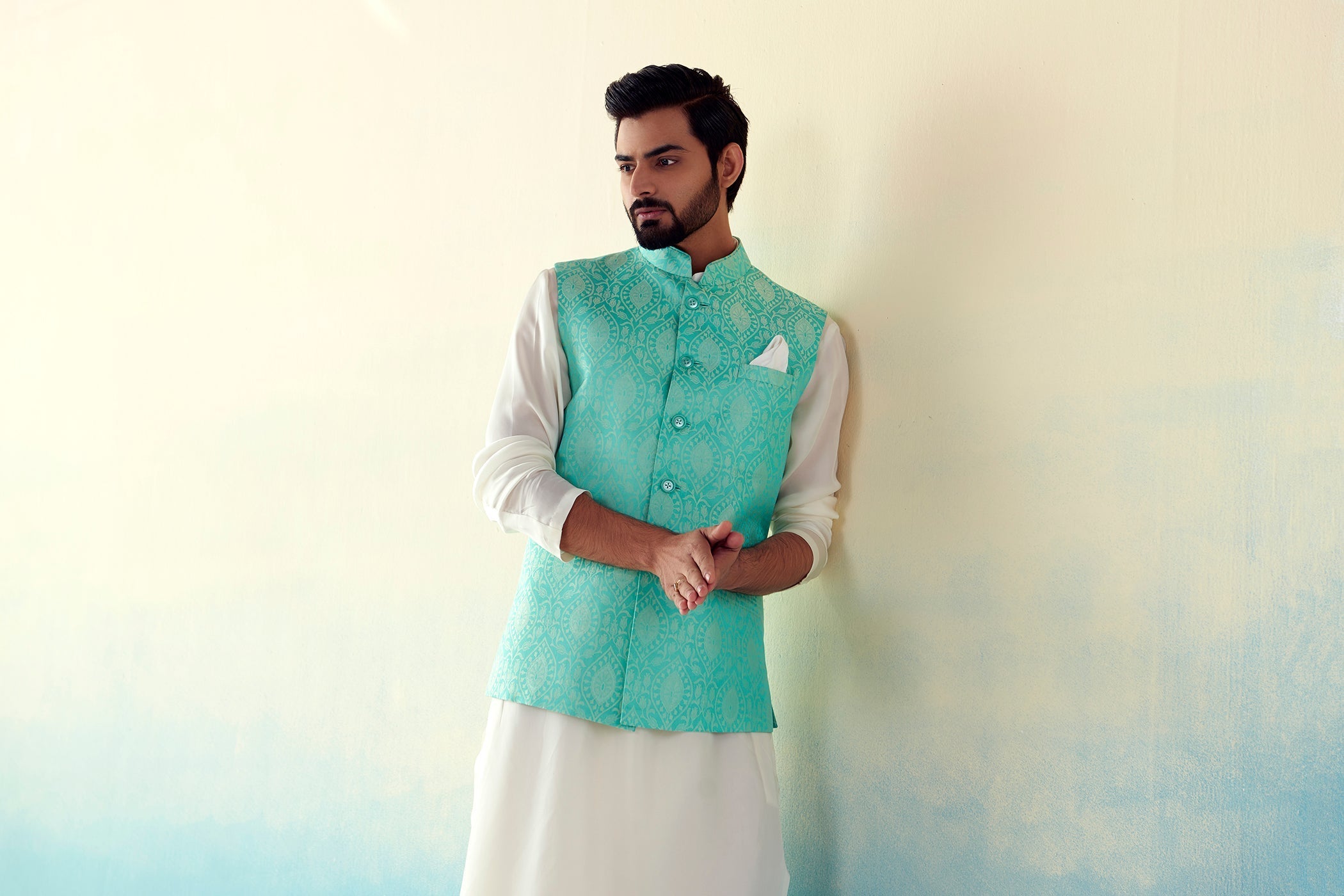Indian menswear the country's culture, history, and social structures. From the draped garments of ancient times to the tailored suits of modern days, the journey of Indian menswear is a fascinating one that tells a story of innovation, adaptation, and resilience.
The earliest evidence of Indian menswear dates back to the Indus Valley Civilization, which flourished from around 2600 BCE to 1900 BCE. The people of this civilization, who lived in the region that is now Pakistan and northwest India, were skilled weavers and dyers, and they created simple but elegant garments made from cotton, silk, and wool. Men typically wore dhotis or loincloths that were wrapped around the waist and legs, while upper-body clothing was optional.
Over the centuries that followed, Indian menswear underwent significant changes as various invasions, migrations, and trade routes brought new influences and ideas. The Mauryan and Gupta empires, which ruled much of the Indian subcontinent from the 3rd century BCE to the 6th century CE, were known for their luxurious textiles and elaborate styles. Men of the upper classes wore brightly colored silk and cotton garments, often adorned with intricate embroidery, jewels, and gold threads. The use of turbans, which were both functional and symbolic, also became popular during this time.
During the medieval period, India saw the rise of various dynasties and kingdoms, each with its unique style of dress. The Mughal Empire, which lasted from the 16th century to the 19th century, was one of the most influential in shaping Indian menswear. The Mughals, who were of Central Asian origin and practiced Islam, brought with them a love for fine textiles and a sophisticated sense of style. The men of the Mughal court wore flowing robes, called jama, made from silk, brocade, or velvet, and often decorated with intricate patterns and motifs. They also wore tight-fitting trousers, called churidar, and long, loose shirts, called kurta, which became popular among the common people as well.
The British colonization of India in the 19th century brought significant changes to Indian menswear. The British, who were accustomed to wearing suits and ties, introduced Western-style clothing to India, which became a symbol of status and modernity. The elite classes of Indian society embraced this new style of dress, adopting tailored suits, waistcoats, and jackets made from wool, tweed, or linen. However, many traditional Indian garments, such as the dhoti, kurta, and turban, remained popular among the masses, who saw them as a way of asserting their cultural identity and resisting colonialism.
After India gained independence from British rule in 1947, Indian menswear continued to evolve, reflecting the country's growing sense of nationalism and modernity. The leaders of the Indian independence movement, such as Mahatma Gandhi and Jawaharlal Nehru, were known for their simple and practical style of dress, which consisted of simple cotton or khadi shirts and trousers. This style, known as the Nehru Jacket, became popular in the 1960s and 1970s and is still worn by politicians and diplomats in India today.
In the 1960s and 70s, Indian fashion saw a resurgence of interest in traditional garments, which were redesigned and modernized to appeal to younger generations. The bandhgala jacket, which is similar to the Nehru Jacket but with a higher collar, became a popular choice for formal occasions. The bandhgala was often worn with jodhpuri pants, which are similar to breeches and are traditionally worn by men from the state of Rajasthan.
The 1980s saw a shift towards a more international style of fashion, with Indian designers experimenting with new materials and styles. The use of synthetic materials like polyester became popular, as it was cheaper and easier to produce than traditional fabrics. The disco era also saw the rise of the leisure suit, which was popular among young men for its comfort and style.
In the 1990s and 2000s, Indian menswear saw a new wave of designers and entrepreneurs, who brought a fresh perspective to the industry. Designers like Raghavendra Rathore, Tarun Tahiliani, and Rohit Bal introduced new designs that blended traditional Indian aesthetics with contemporary styles. They also experimented with different materials like linen, silk, and cotton, creating unique textures and designs.
Today, Indian menswear has become more diverse and inclusive than ever before, with designers and brands catering to different tastes and styles. Traditional Indian garments, such as the kurta, dhoti, and lungi, have undergone significant changes, reflecting modern sensibilities. The kurta, for example, has been transformed into a stylish and contemporary garment, worn with jeans or trousers.
The Nehru Jacket, which was once associated with formal occasions, has now become a versatile garment that can be worn for any occasion. It is often paired with jeans or chinos, giving it a more casual and relaxed look. The bandhgala, a short, fitted jacket with a high collar, has also gained popularity in recent years, particularly for formal occasions.
The fusion style, which blends traditional and western clothing, has become increasingly popular among young men. This style often includes a mix of traditional Indian garments, such as the pathani kurta or bandhgala, with western jackets, pants, or shoes. It also includes accessories like scarves, ties, and pocket squares, which add a touch of elegance and sophistication to the outfit.
Indian fashion designers have also begun to incorporate sustainable and eco-friendly fabrics into their designs. Organic cotton, linen, and khadi, a hand-spun and hand-woven fabric, have become popular choices. Designers are also experimenting with new silhouettes, colors, and textures, blending Indian and Western elements to create a unique and dynamic style.
When it comes to Indian ethnic clothing for men, the possibilities are endless! If you find yourself in a difficult situation in choosing the perfect outfit for an important event, head over to the WeaverStory's menswear section that offers various types of traditional ethnic outfits that vary from region to region.
Author - Aditi Bapna







